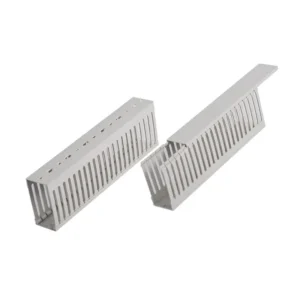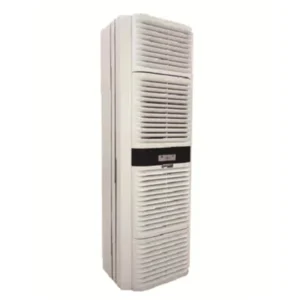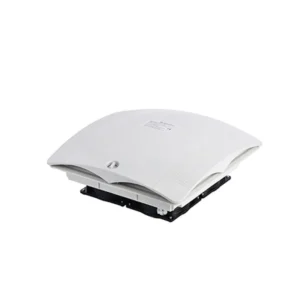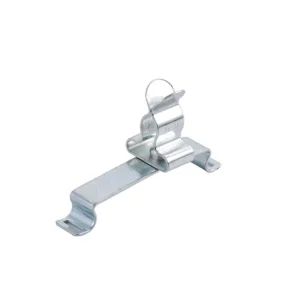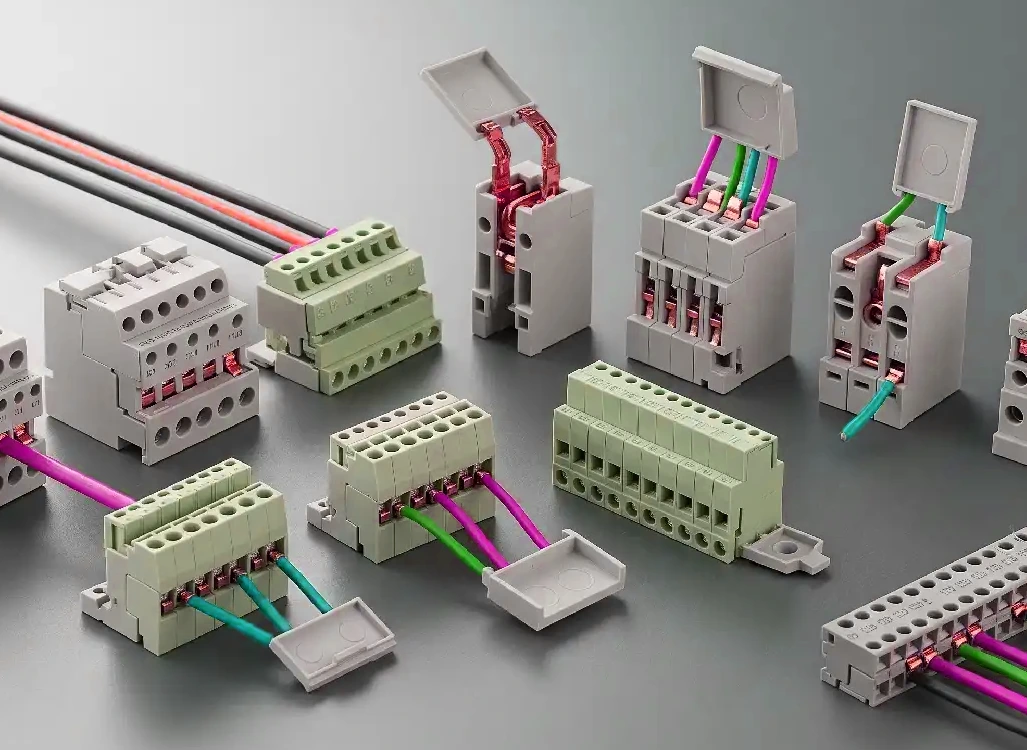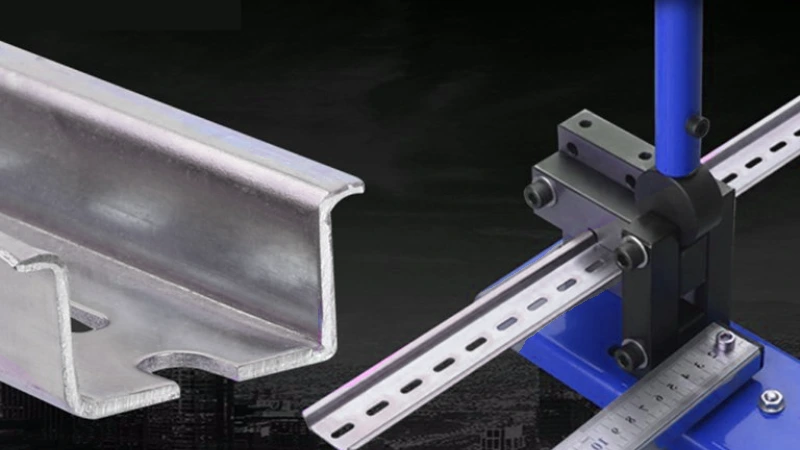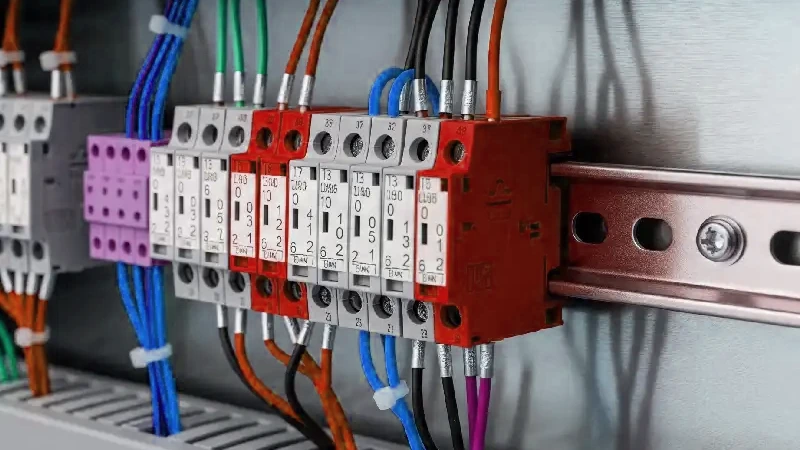You might wonder what are the common electrical cabinet components and why their functions matter. Every day, you see electrical cabinets in factories, offices, and even at home. These cabinets keep everything running safely and smoothly. For example, distribution cabinets help spread power through a building, while control panel enclosures manage machines and automation. Companies worldwide trust Linkwell for high-quality cabinet parts, from terminal blocks to relays. When you understand these parts, you help keep your systems safe and efficient.
Key Takeaways
- Circuit breakers protect your equipment from overloads and short circuits. Always ensure they meet safety standards.
- Terminal blocks organize and secure wiring inside cabinets. They simplify maintenance and improve safety.
- Relays and contactors control electricity flow. Use relays for low power and contactors for high power applications.
- Power supplies convert AC power to the correct voltage. Check efficiency ratings to ensure they meet your system’s needs.
- Good environmental control, like cooling fans and heaters, keeps your cabinet safe and extends the life of components.
What Are the Common Electrical Cabinet Components

When you open an electrical control cabinet, you’ll find a variety of components working together to keep your systems safe and efficient. Let’s break down what are the common electrical cabinet components you’ll see inside most cabinets and how each one helps your equipment run smoothly.
Circuit Breakers
Circuit breakers are the first line of defense in any electrical panel or breaker panel. You use them to protect your equipment from overloads and short circuits. There are several types of breaker, each designed for specific voltage and current levels:
- High-voltage circuit breakers: Handle 72kV AC and above.
- Medium-voltage circuit breakers: Used for 1000V to 2kV systems.
- Low-voltage circuit breakers: Protect up to 1000V AC.
- Miniature circuit breakers (MCBs): Common in homes and small panels.
- Molded-case circuit breakers (MCCBs): Handle 15 to 1000 amps.
- Air circuit breakers (ACBs): Protect large industrial systems.
- Ground fault circuit interrupters (GFCIs): Prevent shocks in wet areas.
- Arc fault circuit interrupters (AFCIs): Stop fires from arc faults.
Tip: Always check that your breaker meets safety standards. Here’s a quick look at some important ones:
| Standard Name | Description |
|---|---|
| ANSI for Low Voltage AC Power Circuit Breaker Switchgear Assemblies | Tests for low voltage breakers in metal cabinets |
| ANSI for High Voltage Circuit Breakers | Safety for high voltage breakers in switchgear |
| ANSI for Vacuum Interrupters | X-radiation safety for vacuum breakers |
You’ll find that Linkwell’s electrical control cabinet solutions use certified breakers to ensure maximum safety and reliability.
Recommended products
-
800 Btu Air Conditioner
-
CES 1P54/IP65 Nylon Cable Management
-
EIA Series 40 Cabinet Air Conditioner
-
F2E-DH Series Cabinet Roof Fan
-
FK5525 Series Fan And Filter
-
DB Distribution Block Universal Terminals
-
EMC Screw Brass Busbar Steel Shield Clampls
-
Industrial Control Transformers 1200va Support multi-country Voltage Adaptation
Terminal Blocks
Terminal blocks make wiring neat and safe inside your cabinet. They let you connect, disconnect, and organize wires easily. Here are some common types:
- Ground terminal blocks: Connect wires to ground.
- Fused connection terminal blocks: Add overcurrent protection.
- Power distribution terminal blocks: Carry high currents safely.
You might also see:
- Feed-thru terminal blocks: Connect two wires directly.
- Multi-level terminal blocks: Save space by stacking connections.
- Disconnect terminal blocks: Allow quick wire removal.
Most terminal blocks use tough materials like thermosetting plastic, glass fiber nylon, or polycarbonate for insulation and strength. Copper parts ensure good conductivity. These components help you keep your electrical panel organized and make maintenance much easier.
Relays and Contactors
Relays and contactors control the flow of electricity in your cabinet. You use relays for low to medium power switching, while contactors handle higher power loads. Both work by using a magnetic coil to open or close contacts, turning circuits on or off as needed.
| Device | Function | Application Type |
|---|---|---|
| Relay | Controls current in low/medium power circuits | Low/medium power |
| Contactor | Switches high-power circuits, like motors or heaters | High power |
You’ll find these components in every electrical control cabinet, helping automate processes and protect equipment.
Power Supplies
Power supplies convert incoming AC power to the right voltage for your cabinet’s devices. They separate power and control circuits, keeping everything running safely. Most power supplies support a wide voltage range, like 85~264 Vac at 47 to 60Hz.
| Efficiency Rating | Description |
|---|---|
| Energy Star | Meets EPA energy guidelines |
| 80 PLUS | At least 80% efficient at various loads |
| CEC Compliance | Meets California energy standards |
| DoE Level VI | Exceeds previous efficiency levels |
Always check the label for voltage and efficiency ratings to match your system’s needs.
Cooling Fans (Linkwell Cabinet Cooling Fan)
A cooling fan is essential for keeping your electrical control cabinet at the right temperature. Linkwell’s cabinet cooling fans provide strong airflow—up to 1030 m³/h—far above industry standards. These fans draw in cool air and push out hot air, preventing overheating and protecting sensitive components.
- Prevents overheating
- Maintains stable temperatures
- Reduces downtime and reliability issues
| Specification | Linkwell | Industry Standard |
|---|---|---|
| Airflow | 1030 m³/h | ≥250 m³/h |
| Temp Range | -30°C to 80°C | -20°C to +70°C |
| Motor Life | 50,000 hours | N/A |
| Protection | IP44 | N/A |
You can trust Linkwell’s fans to keep your cabinet cool and your equipment safe.
Cabinet Air Conditioner (Linkwell)
Sometimes, a fan isn’t enough. That’s where a cabinet air conditioner comes in. Linkwell’s cabinet air conditioners use a closed-loop system with a compressor, evaporator, and condenser to keep the inside of your cabinet cool and dry—even in tough environments.
| Feature | Benefit |
|---|---|
| High Cooling Efficiency | Keeps enclosures safe under high heat |
| Low Noise Design | Quieter workspaces |
| Durable & Reliable | Long life in harsh conditions |
| Energy Saving | Cuts operational costs |
| Easy Installation | Fits many cabinet sizes |
For example, the LK010AJ model uses only 450W but delivers powerful cooling. This keeps your electrical panel running smoothly, even in hot or dusty places.
Enclosure Light (Linkwell)
Good lighting inside your cabinet makes maintenance safer and easier. Linkwell’s enclosure lights use bright, energy-efficient LEDs that last longer than traditional bulbs. You can install them quickly, and they work well even in harsh conditions.
| Feature | Benefit |
|---|---|
| Bright, efficient lighting | Clear view for inspections |
| Easy installation | Quick setup |
| Durable | Works in tough environments |
| Automatic activation | Lights up when you open the cabinet |
Most models offer 2300–2500 lumens at just 18W, so you get plenty of light without high energy bills.
Transformers (Linkwell Control Transformer)
Transformers in your cabinet step down high voltage to a safe, stable level for control circuits. Linkwell control transformers provide steady power, protect against overload, and reduce voltage fluctuations.
| Function | Description |
|---|---|
| Stable, low-voltage power supply | Keeps control circuits running reliably |
| Overload protection | Extends equipment life |
| Voltage fluctuation reduction | Ensures consistent operation |
Always check the primary and secondary voltage ratings, frequency, and temperature limits to match your application.
CMS Cable Management (Linkwell)
Cable management systems (CMS) keep your cabinet tidy and safe. Linkwell’s CMS solutions organize wires, prevent tangling, and make maintenance easier.
| Feature | Description |
|---|---|
| Cable Management | Keeps cables secure and organized |
| Maintenance | Easier access for repairs |
| Safety | Reduces risk of accidents |
| Efficiency | Speeds up electrical work |
A neat cabinet isn’t just about looks—it’s about safety and efficiency.
Cabinet Heater (Linkwell)
If your cabinet faces cold or damp conditions, a heater can save your equipment. Linkwell cabinet heaters keep the inside warm and dry, preventing condensation and corrosion.
- Maintains stable temperatures
- Reduces moisture and corrosion risk
- Extends the life of electrical parts
For example, the HGL 046 model uses 100W or 500W at 230V, fitting easily into most cabinets.
Waterproof Outdoor Electrical Box (Linkwell)
When you need to protect your electrical panel outdoors, a waterproof box is a must. Linkwell’s boxes offer top protection with IP65, IP67, or even IP68 ratings.
- IP65: Dust-tight, resists water jets
- IP67: Handles temporary immersion
- IP68: Survives deep water for 30+ minutes
These boxes use tough materials like stainless steel or high-grade plastic and have gasket-sealed doors to keep out dust and water.
| Feature | IP65 | IP67 |
|---|---|---|
| Dust Protection | Complete | Complete |
| Water Resistance | Water jets | Temporary immersion |
| Suitability | Weather protection | Accidental submersion |
PLCs and Automation
PLCs (Programmable Logic Controllers) act as the brains of your electrical control cabinet. They manage processes, monitor sensors, and automate tasks. You’ll often see PLCs working with I/O modules and HMIs for full control.
- Combine PLC, I/O, and HMI for automation
- Control and monitor industrial processes
- Improve accuracy, efficiency, and reliability
PLCs support many communication protocols, like Modbus, PROFIBUS, EtherCAT, and CAN bus, making them flexible for different industries.
Surge Arresters
Surge arresters protect your cabinet from dangerous voltage spikes. When lightning or power surges hit, these devices divert excess voltage safely to the ground, shielding your sensitive components.
Note: Fast response times and proper clamping voltage are key for effective surge protection.
Bus Bars
Bus bars are thick strips of copper or aluminum that carry electricity through your cabinet. They distribute power, connect devices, and make wiring simpler.
| Function | Description |
|---|---|
| Conducting electricity | Main path for power |
| Power distribution | Splits power to different devices |
| Device connection | Links all cabinet components |
| Improves efficiency | Reduces energy loss |
| Simplifies wiring | Cuts down on cable mess |
| Enhances safety | Lowers voltage drop risk |
| Maintenance | Easy troubleshooting |
| Saves space/time | Faster installation |
| Modular layouts | Easy to expand or change |
HMIs
Human-Machine Interfaces (HMIs) let you interact with your electrical control cabinet. You use HMIs to monitor system status, adjust settings, and troubleshoot problems. Modern HMIs offer touchscreens, alarms, and remote access, making your cabinet smarter and easier to manage.
Now you know what are the common electrical cabinet components and how each one plays a role in keeping your systems safe, organized, and efficient. Linkwell offers a full range of high-quality solutions, from cooling fans and air conditioners to enclosure lights and control transformers, trusted by industries worldwide.
Primary Components of a Control Panel
When you look inside industrial control panels, you’ll notice that every part has a job. The primary components of a control panel work together to keep your equipment running safely and efficiently. Let’s break down what you’ll find in a typical electrical control panel.
Safety Devices
Safety comes first in any layout of an electrical control cabinet. You’ll see devices like circuit breakers, fuses, and emergency stop buttons. These parts protect you and your equipment from electrical faults. For example, a circuit breaker panel will shut off power if there’s an overload or short circuit. You can trust Linkwell’s electrical control panels because they use certified safety devices that meet international standards.
Tip: Always check that your safety devices are easy to reach and clearly labeled in the layout of an electrical control cabinet.
Automation Devices
Automation devices help you control machines and processes without manual work. You’ll find PLCs (Programmable Logic Controllers), timers, and relays inside most industrial control panels. These components let you automate tasks, monitor sensors, and even connect to remote systems. Linkwell’s electrical control panel offers customizable automation features, so you can match your setup to your needs.
Power Management
Power management is all about distributing electricity where it’s needed. Inside the layout of an electrical control cabinet, you’ll see power supplies, transformers, and bus bars. These parts make sure every device gets the right voltage and current. Industrial control panels often include meters and monitoring tools to help you track energy use and spot problems early.
Environmental Control
Environmental control keeps your electrical control panels in top shape. You might use cooling fans, cabinet air conditioners, or heaters to manage temperature and humidity. Good lighting, like Linkwell’s enclosure lights, makes maintenance safer and easier. These features protect sensitive electronics and extend the life of your equipment.
If you want a reliable setup, choose Linkwell’s electrical control panel. You get certified quality, flexible layouts, and options for every industry.
Control Panel Components Integration

When you look inside an electrical control panel, you see more than just wires and switches. You see a system built for safe distribution of power, smart automation, and easy monitoring. Let’s break down how these parts work together.
Power Distribution
Power distribution is the backbone of every cabinet. You start with the main breaker panel, which controls the flow of electricity from the utility. The distribution board splits power into different circuits. Load centers help you organize these circuits, making sure each area gets the right amount of electricity. Breakers protect each circuit, stopping overloads before they cause damage. Contactors switch large loads on and off, keeping your machines running smoothly. The distribution panel brings everything together, so you get reliable power where you need it.
Tip: Always check your main breaker panel and load centers for clear labels. This helps you find problems fast.
| Component | Role in Power Distribution |
|---|---|
| Main breaker panel | Controls incoming electricity |
| Distribution board | Splits power into circuits |
| Load centers | Organizes and manages circuits |
| Breakers | Protects circuits from overload |
| Contactors | Switches heavy loads |
Protection and Monitoring
You want your system to stay safe and easy to monitor. Breakers act as guards, shutting off power during faults. The main breaker panel gives you a quick way to cut all power in emergencies. Surge arresters protect against voltage spikes. You use meters and sensors to watch for changes in current or temperature. Linkwell’s modular design lets you add or remove protection devices as your needs change. You get peace of mind knowing your cabinet meets international standards.
Automation and Control
Automation makes your life easier. PLCs and contactors work together to control machines and processes. You set up load centers to handle different tasks. HMIs let you adjust settings and see what’s happening inside the cabinet. The main breaker panel connects everything, so you can automate power distribution and keep your system running efficiently. Linkwell offers customizable solutions, so you can build a cabinet that fits your exact needs.
Note: Modular design means you can upgrade your electrical control panel without starting from scratch. This saves time and money.
Selecting Cabinet Components
Choosing the right components for your cabinet can feel overwhelming, but you can break it down into a few simple steps. Let’s look at what you need to consider before you make your final selection.
Application Needs
Start by thinking about where you will use your cabinet. Will it be indoors or outdoors? Does your equipment need extra cooling or heating? You should list all the devices that need a power supply. Some cabinets need a backup supply for emergencies. Others require a stable power supply for sensitive electronics. If you work in a harsh environment, you might need a waterproof cabinet or extra cooling fans. Linkwell offers a wide range of solutions, so you can match your cabinet to your exact needs.
Tip: Always check the total power supply load before you choose your components. This helps you avoid overloads and keeps your system safe.
Certification and Standards
You want your cabinet to meet safety and quality standards. Look for products with UL, CE, or IEC certifications. These marks show that your cabinet and its supply parts have passed strict tests. Linkwell’s products come with international certifications, so you can trust their quality. Certified power supply units help protect your equipment and keep your operations running smoothly.
| Certification | What It Means |
|---|---|
| UL | North American safety |
| CE | European compliance |
| IEC | Global standards |
Customization Options
Every project is different. Sometimes, you need a custom cabinet size or a special power supply. Maybe you want extra lighting or a unique cable supply system. Linkwell can help you design a cabinet that fits your needs. You can choose the layout, supply voltage, and even add your own branding. Their team will support you from design to delivery, making sure your supply chain stays on track.
You now know why understanding electrical cabinet components matters. When you choose the right parts, you boost safety, save energy, and keep your systems running smoothly. Linkwell gives you access to top-quality products and expert advice for any project.
Need help with your next cabinet? Reach out to Linkwell for custom solutions and ongoing support. Your equipment deserves the best!
FAQ
What’s the most important component in an electrical cabinet?
Every part matters, but you should always check your circuit breakers first. They protect your equipment from overloads and short circuits. Without them, your whole system could fail.
How often should you inspect or maintain your cabinet components?
You should inspect your cabinet every six months. Look for dust, loose wires, or signs of overheating. Regular checks help you catch problems early and keep your system running smoothly.
Can you customize Linkwell cabinet components for special projects?
Absolutely! Linkwell offers custom sizes, layouts, and branding. You can work with their team to design solutions that fit your exact needs. Just reach out and share your requirements.
What certifications should you look for when choosing cabinet parts?
Always check for UL, CE, or IEC certifications.
These marks show your components meet strict safety and quality standards. Certified parts help you avoid costly failures and ensure reliable operation.


